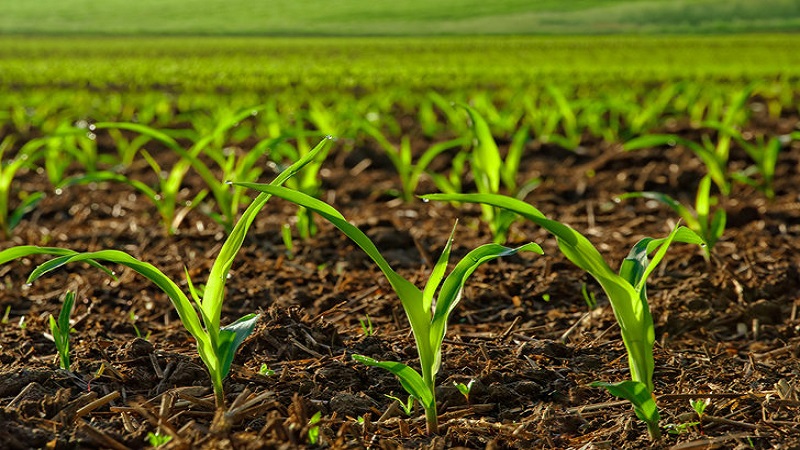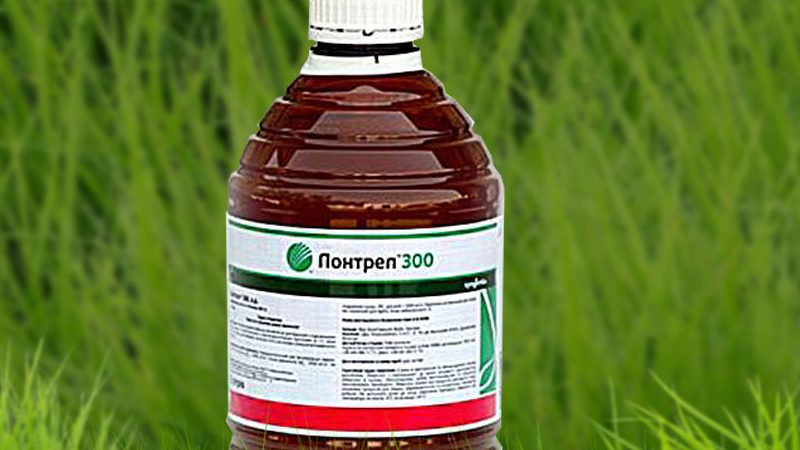How to choose the right herbicide for corn and process: a review of the best products
Weed grass in the area with corn has a detrimental effect on the crop and reduces its yield. Resistance, adaptation to weather conditions, aggressive growth make the weeds "unkillable". If regular hand weeding is ineffective or impossible, agricultural chemistry is used - herbicides.
The content of the article
What is a herbicide
The word "herbicide" has a Latin origin, literally means "killing grass". In the agricultural environment, this is the name for a group of powerful chemical reagents for the destruction of various vegetation on the site.
What is it needed for
Herbicide treatment is called chemical weeding. Such preparations are used in large and small areas where it is difficult to remove weeds manually. Herbicides are used in forests, fields and planting plantations, vegetable gardens and orchards.
Reference! Chemicals differ in composition, effectiveness, area and application. More than 300 types of herbicides are now known in the agricultural environment.
When and how to apply on corn

Many weeds are detrimental to culture and the future. harvest... Have corn weak competition: unwanted growth takes away nutrients and water from it. Due to the increased sensitivity of the cereal, not all herbicides are suitable for processing.
The most effective and safe pre-emergence or early post-emergence (after the formation of 3-5 leaves on the weed) the introduction of chemicals. This allows you to control the growth of weeds.
Application features depend on the selected drug. The instructions indicate the proportions of the working solution, consumption rates, application rules.
There are general rules for the use of corn herbicides:
- loosening the soil, as the clods contain seeds and weed roots;
- applying the drug only on wet ground;
- strict account of weather conditions: the procedure is not carried out in the rain, strong wind, heat.
Only soil or weeds are cultivated. Contact of corn with any herbicide is strictly limited (the substance should not get on the leaves, stems or remain on them).
Classification
The types of herbicides and methods of application are presented in the table:
| Classification criteria | Kinds |
| Mode of action |
|
| Application time |
|
| Purpose of application |
|
| Ability to move |
|
The best herbicides for corn
The range of herbicides permitted for corn is extensive. Their only drawback is the sale in large volumes for industrial purposes. Almost all drugs are dispensed in bottles or vials for 5-10 liters or kg. Overflow and packaging in smaller containers is not carried out in stores. The shelf life of the funds allows their use for the next years (with proper storage).
Callisto
Release form - concentrated suspension. Has a selective effect, protects corn from dicotyledonous annuals and some perennials (milkweed, quinoa, sow thistle, shepherd's purse, nightshade and other types of weeds). The drug penetrates into plants through the leaves, roots, has a depressing effect.
Price for 1 liter - 9500-10500 rubles, 5 liters - 50,000 rubles.
"Titus"
It is produced in the form of water-soluble granules, dry suspension. Has a selective effect against one- and perennial grasses and weeds. Penetrates into the plant through the leaves. The first signs of exposure are noticeable on the 5th day, complete death occurs in 15–20 days.
Price for 100 g - from 3000 to 5000 rubles.
"Diva"
Release form - emulsion suspension. It is a postemergence selective herbicide. The first signs of damage to weeds are noticeable 3-4 days after treatment, death - in 2-3 weeks. Destroys one- and perennial weeds of the cereal group:
- ambrosia;
- all types of sow thistle and bitterness;
- field mustard;
- wood lice;
- all types of quinoa;
- dandelions;
- wild chamomile.
In total, the drug has a detrimental effect on 150 species of dicotyledonous weeds.
The cost for 1 liter is 900 rubles, for a canister of 5 liters - from 4000 rubles.
"Basis"
The form of the preparation is a dry flowable suspension. The active substance in the composition penetrates the weed through the leaves, blocks its growth. It does not possess phytotoxicity, 1 treatment is enough to completely destroy unwanted flora.
Price for 1 kg - 600 rubles.
"Trimmer"
Form - granules for dilution in water. It is a universal systemic drug. Use until 3-5 leaves are formed on weeds.
The price of a 500 g bottle varies from 4000 to 8000 rubles.
"Miranda"
It is produced in the form of a suspension. It is a postemergence broad spectrum herbicide. The active substance penetrates into the weed cells, suppresses their division. The drug is moderately dangerous to humans.
It has a low cost: 1 liter - 300 rubles.
"Turbin"
Highly active herbicide for the control of annual weeds. The main substance in the composition is acetochlor. Acts on germinating grass, penetrates into tissues, inhibits cell growth and division. The result of treatment is the cessation of growth and death of weeds. The active protective effect of the drug lasts 3 months (the substance remains in the upper soil layer).
Cost for 10 liters - from 10,000 rubles.
"Quasar"
It belongs to the group of post-emergence herbicides. Has a systemic effect on all types of plantspests... It is produced in the form of a suspension concentrate. Differs in accelerated action, long-term protection of corn crops.
Cost for 1 liter - from 650 rubles.
"Adengo"
Pre- and post-emergence herbicide, which is used against dope, quinoa, ashweed, squid and other weeds. Eliminates hard-to-control plants: scum, creeping wheatgrass. It has a "double blow": the substance remains outside and leads to the death of weeds, penetrates inside and deactivates the growth processes.
Cost for 1 liter - 5600 rubles.
"Lapis lazuli"
The formulation is a nanoemulsion concentrate. Absorbed by plant roots and leaves. Most types of cereal weeds are sensitive to the drug. The herbicide is safe for corn and other garden crops. The drug is inexpensive, low-toxic. Under favorable conditions, the protective effect lasts up to 3 months.
Price per 1 kg package - from 2000 rubles.
Tips for selection and use
When choosing a specific preparation, take into account the type of weed, the scale and activity of its growth, the state of the corn and the plot. The method of application of most drugs is similar: dilution with water to the desired consistency, spraying of weeds or soil. Be sure to read the instructions for the selected product and strictly observe the dosage.
Important! Corn wet from rain or dew, stressed from drought, waterlogging, temperature changes, is not treated with chemicals.
Main nuances:
- Only selective herbicides are suitable for treating an area with corn and any other useful crops.
- They carefully read the composition, choosing the most harmless substance.
- Only 1 drug is used per season on the site.
- Within 2 weeks after the procedure landing do not weed.
- The term of the last processing is one month before the harvest.

It is optimal to use herbicides when from 2 to 6 leaves have formed on the weed grass: during this period it is most vulnerable and weak.
Reviews
Agronomists share their views on the benefits and necessity of using herbicides for corn:
Vasily, Penza: «I grow only corn on its site. In the early stages, the shoots are not visible behind the weeds. It shades seedlings, oppresses culture. I tried to pry and pull out, but it is laborious and time-consuming. The herbicide "Prima Donna" made my work easier. The weeds turned yellow within a day after processing, and the corn straightened and turned green. "
Anastasia, Voronezh: “We have a small plot - we grow corn for ourselves. Tired of fighting weeds, I decided to try special products. I used Lazurit. Diluted according to the instructions - the weed has withered, the corn remained intact. "
Victoria, Oryol: “Over the years of agribusiness, we have tried many herbicides. We opted for Callisto and Basis. The preparations are effective and safe for cultivated plants. "
Conclusion
Proper herbicide application will protect and rid the corn of weeds without harming the crop itself. For treatment, drugs of systemic action are chosen, which are absorbed by leaves, stems and quickly spread throughout the plant. For an effective result, it is important to strictly follow the instructions for use, observe the indicated proportions.